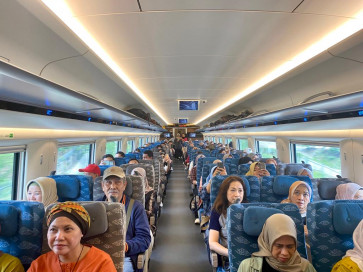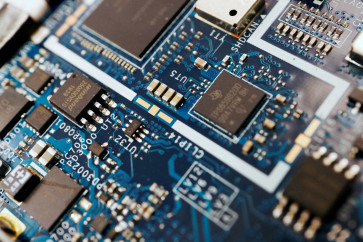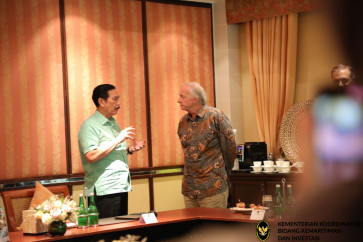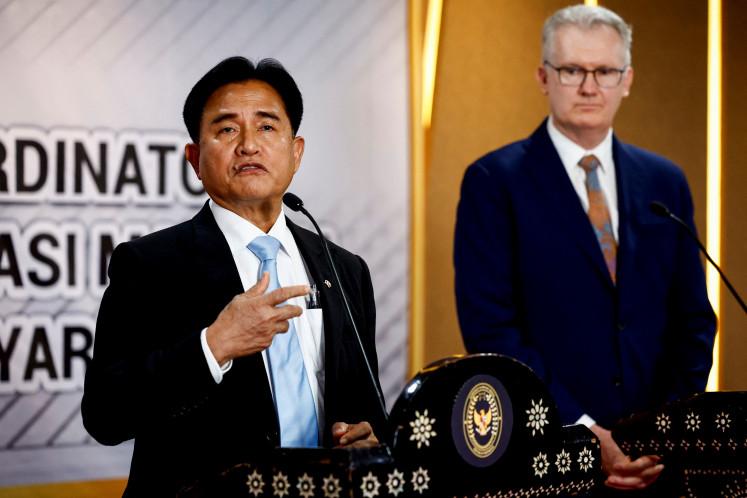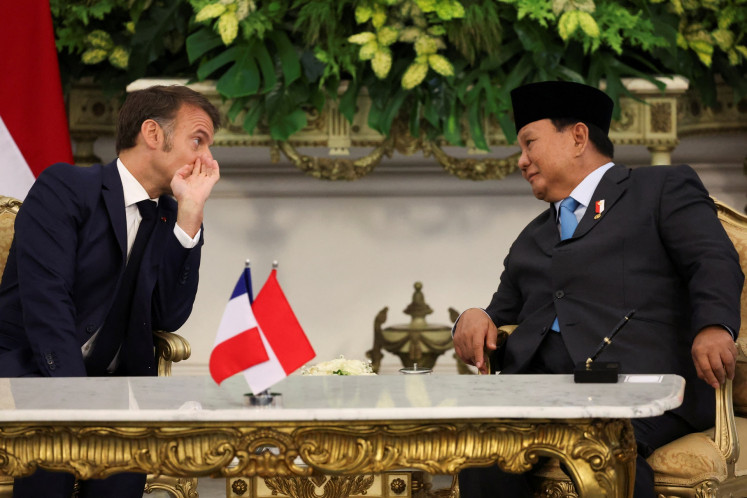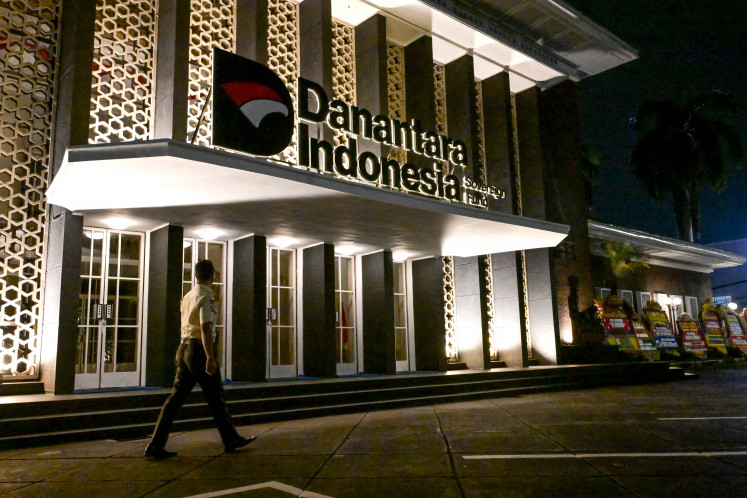What to wear on Lebaran: chic, simple and eco-friendly
Change text size
Gift Premium Articles
to Anyone

Indonesian fashion designers give their insights on what will trend in modest fashion for Eid-al Fitr this year.
Getting a new outfit for Eid-al Fitr has been the norm for many Muslims worldwide. After all, the holy day signifies a fresh, new beginning in life after an entire month of fasting. And in the days following the COVID-19 pandemic, many Indonesians have become euphoric and indulged in a fashion shopping spree.
“People don’t just buy one or two new outfits for Lebaran this year,” Lisa Fitria, project director of Muslim Fashion Festival 2023 (Muffest+ 2023), said when interviewed by The Jakarta Post at The Westin, South Jakarta, on March 10. “They buy four or five instead.”
The reason for this increase is that there are a lot of invitations for gatherings around Lebaran holidays, triggered by the revocation of COVID-19 public restrictions.
“And each invite comes with a different dress code,” Lisa explained.
As a result, sales during Muffest+ 2023 have also tripled compared to the previous years.
“This is good news for the country’s fashion industry,” the event’s project director said.
Before going on a splurge, you should learn valuable insights from top fashion designers in the country on what to buy for Lebaran.
Colors: from white to vibrant
“Whites and beiges will still be in for Eid-al Fitr,” fashion designer Amot Syamsurimuda said, when interviewed at Jakarta Auto Runway in Jakarta Convention Center (JCC) on Saturday, March 19. “Many people are too lazy to think [of any other colors to wear] and just follow the norm.”
Indeed, white has always been the standard for Lebaran as the color symbolizes a clean slate.
Nevertheless, fashion designer Chaera Lee predicts the trend will shift toward more vibrant colors this year.
“[[People] will still wear whites for Eid prayer, but we’ll be seeing a lot of red, orange, lavender and all sorts of vibrant hues in Lebaran [gatherings] this year,” Chaera said.
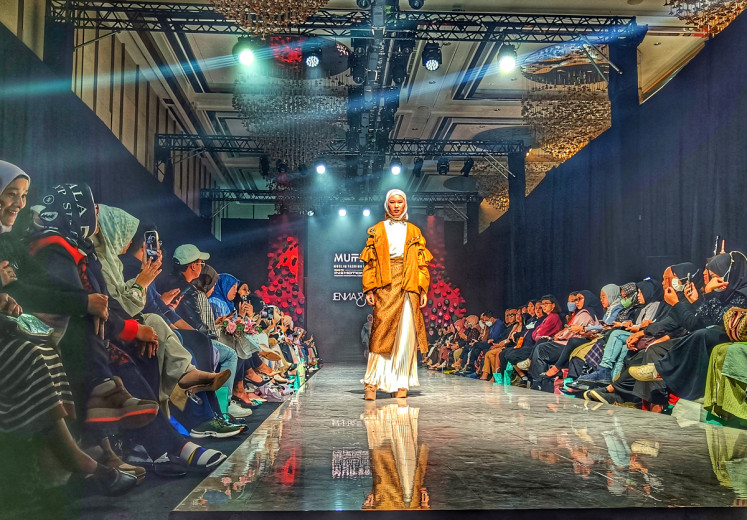
According to the Muslim fashion designer, people want to wear bright colors for Lebaran to express their happiness at being able to celebrate the holy day with their loved ones again after two years of PPKM (public activity restrictions) due to the pandemic.
Silhouettes: Simple yet outstanding
While modest wear’s colors are becoming more lively for Lebaran, their silhouettes are becoming more uncomplicated.
“People no longer want to bother with complicated designs that might feel inconvenient or hamper their movements,” Hanni Haerani, general manager of Islamic Fashion Institute (IFI), said at The Westin on March 7.
The pandemic has also contributed to this shift in modest fashion trends.
“During the pandemic, many of us wore comfy, loose-fitted outfits as we stayed home all day long,” Hanni said. “This preference seems to have carried on until now.”
But being comfortable does not necessarily mean looking like a plain Jane.
“People still want to look unique during Lebaran,” Hanni said. “Therefore, they’d prefer outfits with discreet yet distinctive embellishments.”
As seen in Muffest+ 2023, pleats and embroideries are the favorite embellishments for both men’s and women’s modest wear this year.
Styles: More personal and Indonesian
Indonesia is blessed with a wealth of Muslim fashion styles, while in many other countries, Islamic clothing mainly refers to what people wear in the Middle East. However, Indonesian modest wear comprises many contemporary clothing styles while adhering to religious laws.
“Outside Indonesia, Muslim fashion [for women] is mainly abaya,” Lisa Fitria said. “Thankfully, there are a lot of creative fashion designers in Indonesia that come up with many innovative designs.”
Even during Lebaran, many people want to celebrate it by wearing their styles.
“We’re seeing less and fewer [Indonesian] people wearing Lebaran outfits with Arabic styles each year,” Amot Syamsurimuda commented.
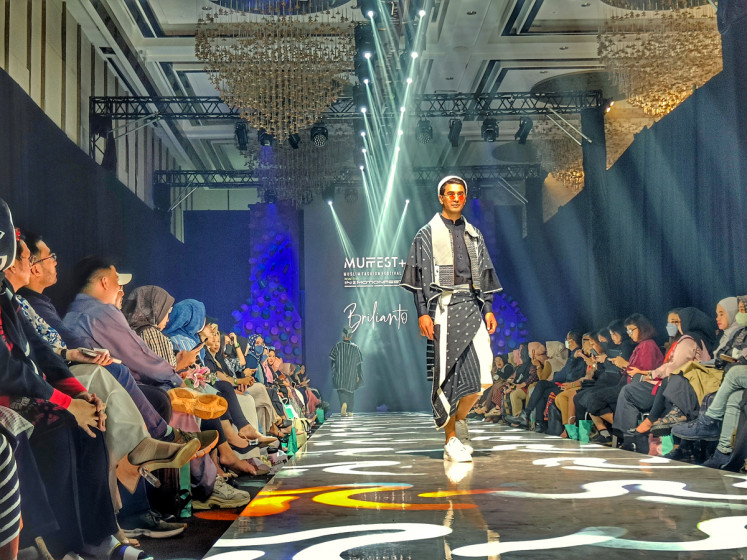
According to the fashion designer, many more men and women want to maintain their signature styles, even when wearing modest fashion.
“I think people are beginning to see clothes as an investment,” Amot said. “They’d want [an outfit] they can début on Lebaran and then wear [again] on many different occasions afterward.”
Besides getting more personal, modest fashion is also becoming more Indonesian these days.
“Many feel inclined to show their ‘Indonesian-ness’ by incorporating batik, tenun [weaving] or lurik [striations] in their modest wear,” Jetti R. Hadi, vice chairwoman of Indonesia Halal Lifestyle Center, said.
Many Indonesian men also feel confident wearing sarongs in formal and informal events these days.
“For women’s modest wear, kebaya (Javanese light, loose tunic) and baju kurung (Sumatra’s traditional costume) silhouettes are making a comeback,” Jetti added.
Fabrics: Environmentally sustainable
Lots of people are feeling concerned about the environment these days. In fashion, many buy and wear outfits based on their sustainability.
“Sustainable fashion is, in fact, in line with Islamic Sharia,” Lisa Fitria said. “We’re taught not to waste [anything] and take good care of nature.”
As a result, many people prefer to wear clothes made of natural materials, such as cotton, linen, rayon and silk, which are both soft and relaxed on the skin and biodegradable.
“Upcycled and recycled materials are also getting very popular in modest fashion these days,” Hanni Haerani commented.
In Muffest+ 2023, fashion designer Anggiasari Mawardi presented a modest wear collection made of upcycled denim from local garment factories in Bandung, West Java, which is combined with cotton.
Hijabs: Instant and simplified
Hijabs are essential for Muslim women’s fashion. And these days, this clothing item has also transformed to be a lot simpler and easier to wear to accommodate their fast-paced, modern lifestyles.
“When Muslim fashion went booming [in Indonesia] circa 2010, many women wore layered hijabs, adorned with a corsage and other elaborate embellishments,” Lisa Fitria said.
“That trend is gone now.”
According to the fashion designer, today’s Muslim women prefer simpler hijabs they can quickly and comfortably wear throughout the day.
“A lot of fashion designers are now offering instant hijabs that women can simply put on,” Lisa said.
In addition, many Muslim women also adopt turbans as their modest fashion style.
“Turbans are also becoming hype again these days, especially among younger women,” Hanni Haerani, the Islamic Fashion Institute general manager, said. “[Turbans] are chic, easy-to-wear and suitable with almost any modern outfit.”

